2018 Santa Cruz Hightower LT Carbon CC XX1 Reserve
(discontinued)
| Where To Buy | |||
|---|---|---|---|
Free shipping on orders over $50 (continental U.S. only).
International shipping available. Some exclusions apply. |
|||
Free shipping on orders over $50 (continental U.S. only).
International shipping available. Some exclusions apply. |
|||

Big wheels keep on turning, or at least that’s how the saying goes. Wagon-wheeled bikes have come into the limelight this year, and for good reason. When paired with capable suspension and well-thought-out geometry, they offer rock crushing roll-over and traction smaller-wheeled bikes simply can’t provide.
We’ve spent the better part of three months on the new Santa Cruz Hightower LT sussing out the finer details of the bike. Who is it for? How did it hold up? Where did it perform best? We set out to answer all of these questions and more. From downhill bike worthy gravity laps to high alpine adventures, cross-country races, and enduro events, we put the bike through its paces in a number of configurations and riding environments.
Santa Cruz Hightower LT Highlights
- Made for enduro racing and aggressive trail riding
- 150mm (5.9-inches) of front and rear wheel travel
- VPP suspension design
- 29-inch wheels only (no 27.5+)
- Available in CC and C carbon
- Double sealed bearings
- Non-adjustable geometry (prior Hightower had two settings)
- Tapered headtube
- Internal cable routing
- Water bottle mount
- Threaded bottom bracket with ISCG05 tabs
- Boost 148mm spacing with 12mm through axle
- Lifetime warranty on frame and bearings
- Colors: Gloss Wicklow Green, Gloss Slate and Grey
- Sizes: S, M, L, XL, XXL
- Bike Weight: 28.3 to 29.3-pounds (12.8 to 13.3kg)
- Frame/Shock Weight: 5.9-pounds (2.68 kg)
- Available with Santa Cruz Reserve carbon rim upgrade (CC bikes only)
- Available in seven builds from $3,949 to $9,299 USD
Before we continue, we encourage you to look at our First Look feature, below, as it gives a good comparison to the original Hightower as well as some of our early findings. Also, for clarity’s sake, as we indicated in our prior piece, we will call the Hightower LT the "LT" and the shorter travel Hightower the "Hightower."




In summary, the LT was the result of the Santa Cruz Enduro World Series team asking for a longer travel 29-inch bike. Some links were made, then a different rear triangle followed with a whole bunch of internet speculation. With obvious demand in the marketplace, Santa Cruz launched the 150mm 29-inch only LT in early July 2017 to the collective "exhale" of the internet. For better or for worse, the longer travel aggressive 29-inch bike is quickly becoming the one-bike-quiver for many – the proverbial Swiss army knife on account of how many things it can do and do well.
As is the case with most all Santa Cruz frames, the finish and attention to detail is top notch. Every detail, from cable routing to bottle cage placement and downtube protectors, is executed to near perfection.
Geometry


The bike's geometry also leaves little to be desired, with sizes ranging from S to XXL. Though reach measurements can be on the short end of the spectrum and the seat tube angle is a hair more relaxed than we’d like to see, Santa Cruz didn’t go crazy with the seat tube height which makes up-sizing possible. This also allows you to run longer 170mm travel dropper posts, which Santa Cruz specs on some sizes. At 6'2" tall, our tester fell into the recommended sizing for the size XL.
Santa Cruz ships the bike with a 150mm travel fork to match the 150mm rear end, and the numbers above reflect this. They do note that a 160mm fork is compatible, however, and their Pro racers often choose this option. This slackens the bike out and raises the bottom bracket slightly.
On The Trail
For those looking for a refresher of our First Ride findings, it goes like this: good, but not great. Though we found the geometry to encourage rally-car inspired riding, we had suspension issues and felt the bike’s rear end could be tweaked to work a bit better in rough terrain.
Though we found the geometry to encourage rally-car inspired riding, we had suspension issues and felt the bike’s rear end could be tweaked to work a bit better in rough terrain.
Looking at a suspension kinematics analysis, things look very similar to the Hightower with a hair more travel. This means the bike is regressive off the top, flat through the sag point progressive later in the travel. You’ll recognize the shape of this curve from just about every Santa Cruz trail bike prior to the new Nomad G4 (which has a V10-like leverage curve). To add, anti-squat is around 100%, suggesting good pedaling efficiency.
The numbers are confirmed on trail, and the LT is perhaps the most efficient 29-inch bike with upwards of 150mm of travel when it comes to pedaling efficiency and climbing prowess. The bike stays quiet, planted, and offers a ton of traction through technical bits of trail. To add, with the top end Santa Cruz build, our test bike tipped the scales at a svelte 28.3-pounds (12.8kg).
The numbers are confirmed on trail, and the LT is perhaps the most efficient 29-inch bike with upwards of 150mm of travel when it comes to pedaling efficiency and climbing prowess.
Though the seat tube can be a bit slack depending on height, there is little one could fault as to how the bike motors up a hill. It reminds us of a bike with a whole lot less travel, offering traction when needed but staying quiet even during extended out-of-saddle efforts. In fact, the LT’s pedaling efficiency is so good we have to wonder why anyone looking to run 29-inch wheels would go with the lower travel Hightower.

As noted above, we’ve already given the bike a good thrashing in our initial look. We found the bike to stand out in a few ways, namely its chassis design paired with balanced feeling geometry.
Santa Cruz has been at the carbon fiber frame game longer than most and it shows. The bike is stiff in all the right places without being harsh. This allows for the bike to transmit energy very effectively – be it bump force being transmitted to the bike’s damper, a rider leaning the LT over in a corner, or the rider’s pedaling energy going to the rear wheel. This is the type of thing that is hard to quantify, but easy to feel the instant you throw a leg over the frame.
Settled and solid are the two words that come to mind. Point it where you want it to go and pick your head up. The limiting factor is likely the pilot, not the bike, when it comes to changing direction.
When this sort of frame engineering and design is combined with modern balanced geometry, it should be of little surprise that the bike is a weapon in twisty terrain. Settled and solid are the two words that come to mind. Point it where you want it to go and pick your head up. The limiting factor is likely the pilot, not the bike, when it comes to changing direction.

Hightower LT Goes Hulk Mode
We decided to do a little bit of part swapping to see if more performance couldn’t be eeked out of the LT’s ability to eat bumps. Considering the bike’s enduro racing roots and the fact we had entered an enduro race at Targhee with a good bit of chunk, it seemed prime time to see how far we could push the bike’s bump eating capabilities.
- First, we ditched the FOX DPX2 air shock in favor of a FOX DHX2 coil shock. Santa Cruz is careful to note the frame’s kinematics aren’t overly favorable to a coil, but if you are okay with a more linear suspension feel it's something you can run. Josh Bryceland also often runs his with a coil.
- Second, we tried two additional forks: a 160mm travel RockShox Lyrik RCT3 and a 170mm travel SR Suntour Durolox R2C2.
- Third, we installed a larger 2.5-inch Maxxis Minion DHF tire up front along with a Maxxis Aggressor rear tire with a Double Down casing.
- Finally, we rounded off the package with some Cushcore tire inserts.
The result? As Kai the Hitchhiker says, "Smash SMASH SA-MASH." Between the longer travel fork, coil shock, bigger volume tires, and tire inserts, the bike’s top end really started to open up. Let's dive in...
The front end of the bike felt more at home running the 160mm fork, allowing us to more aggressively weight the front wheel with the additional benefit of more grip than the 150mm setup. However, as you begin to increase the travel of your fork (or put more spacers under your stem), you begin to lose a bit of reach. To address this, we went to a 60mm stem, which is something we suggest any rider who "up-forks" this bike to consider. Is a 160mm fork always appropriate? Considering the bike's intended usage and geometry, we struggle to think of someone who won’t like it.
The front end of the bike felt more at home running the 160mm fork, allowing us to more aggressively weight the front wheel with the additional benefit of more grip than the 150mm setup.
Running a 170mm fork is doable, and for certain EWS-level races, bike parks, DH laps, or time in the Alps it certainly has its place. However, the SR Suntour fork is actually an additional 8mm taller than the competition, making for an uber tall front end (close to a 180mm Lyrik). That said, the numbers weren’t that far out of line. Though the reach shortened significantly, the bottom bracket was about 13.5-inches and head angle about 65-degrees, which is still very acceptable considering the bike’s intended use. Overall however, we found the bike was most balanced with the 160mm fork.
Turning to tire setup, Cushcore added to the bike’s point-and-smash feel by giving more confidence in corners and bits of technical terrain. This addition can be a mixed bag for your everyday rider, especially if your most frequented terrain is more XC in nature, but it's 100% worth it in an enduro race environment.

Finally, the coil rear end offered more grip and more consistency, but as a whole this is an upgrade that seems best for your die-hard coil-shock-lover. As Santa Cruz suggests, the bike isn’t exactly engineered with a coil in mind. Though we only bottomed it harshly a handful of times, the bike wasn’t that much better when considering where this bike is most often in its element. If chasing the absolute best bump-eating performance is your thing, a coil is a worthwhile look, but it comes at a significant weight penalty and is a bit tricky to tune for the leverage curve. To add, it further mutes or deadens the rear end. Some may like this, while others may prefer the more playful ride an air shock provides.
If chasing the absolute best bump-eating performance is your thing, a coil is a worthwhile look, but it comes at a significant weight penalty and is a bit tricky to tune for the leverage curve. To add, it further mutes or deadens the rear end.
In the end, the bike never delivered the bump eating prowess found on the Nomad, which is perhaps an unfair comparison being the new Nomad has 20mm more travel and an entirely different shock configuration. Still, the new Nomad showed us what Santa Cruz is capable of in a pedal-friendly package, and no tuning or damper selection left us with the "shorter travel wagon-wheeled Nomad" we secretly hoped for.
After riding the bike in hulk mode for the better part of a month, we decided to swap back to the bike’s stock build. Though the bike lost a marginal amount of top end, it was more pleasurable to ride outside of uber-rough, brake bump laden race situations. Alas, it turns out Santa Cruz knows what they are doing when it comes to spec'ing a bike. The only thing we didn't really find drawbacks to was the 160mm fork (though 150mm gives a more sporty ride). Otherwise, the rest of our monkeying around came at some expense – be it weight, cost, or both.
Back in stock trim the bike proved incredibly efficient and versatile, more-so than any other 130mm travel and up 29er this tester has ridden. As a result, this left him grabbing the LT more times than not. To maximize suspension performance with the DPX2, we found that by maxing out the volume spacers, running over 30% sag, and running the rebound bit faster than we are accustomed to helped liven things up significantly. The only downside was a bit of a skittish feel when shock temps rose.
Build Kit
After countless miles and a quarter million vertical feet of descending, a component check is in order.

To start, the SRAM XX1 Eagle 12-speed drivetrain worked awesome, only functioning poorly when the b-tension screw wasn’t perfectly to spec or when we knocked the derailleur out of alignment on some unknown trail debris. Our only gripe with respect to the drivetrain was the small-ish 30-tooth chainring. Considering Eagle's wide range and the bike's go fast intention, we’d suggest a 32 or 34-tooth ring.
The SRAM Guide Ultimate brakes were in line for the bike’s intended use, though the pad material may have been responsible for the audible squeal that developed after about a month of use. Swapping pads to the sintered version remedied this. For those that have experience the sticky piston problem, it does appear SRAM has remedied this. We found ourselves in steep terrain often and did our best to recreate all known Guide problems through temperature fluctuations and extended use. After hundreds of hours in the saddle, there were zero problems with any SRAM part on the bike.
A 170mm travel RockShox Reverb Stealth was an excellent touch in the XL size. Kudos to Santa Cruz for this often overlooked but beneficial upgrade. Also, unlike Reverbs of yesteryear, the seatpost functioned as it did on day one throughout the entire test, never missing a beat.
All control parts were top rung, though we did swap for a 31.8mm diameter bar and stem setup merely for hand forgiveness. The stiffness of the 35mm diameter Santa Cruz components was a bit much for the tester’s hands, though we don’t expect most to find this as a negative. As noted above, we also went to a 60mm stem. This is obviously personal taste and will vary depending on bike size.

Finally, the new Santa Cruz Reserve Carbon wheels were a standout product. Though we did knock them out of true, they kept turning day after day despite our best efforts at ruining them. Based on experience, most other rims would have blown up at some point considering line selection, pace, pressure, and terrain. To add, the wheelset was stiff without deflecting – the result of a well-thought-out rim design paired with good spoke gauge and hole count. We’ve been on too many carbon wheelsets that overly penalized being off line when paired with a stiff frame, and these had just enough give to be forgiving in these situations.
I Own The Original Hightower, Should I Upgrade?
Short answer: No. We put this in our First Look feature and stand by it. The original Hightower is a good bike and the changes to the LT are more modest than the spec sheet might suggest. Again, we’d suggest running a longer fork on your Hightower and some meatier tires if you want to increase its descending prowess without breaking the bank.
Does this mean the LT isn’t worth it? Not so fast there either. Anyone buying a Santa Cruz Hightower who is certain they will go with 29-inch wheels (remember, the LT is 29-inch only) would be silly to not go with the LT. The bike is just as light and just as efficient as its shorter travel little brother, so why not?
Long Term Durability
The suspension concerns we noted in our First Look persisted. Namely, the replacement FOX 36 FIT 4 fork, though a stellar performer, continued to intermittently and audibly top out. This didn’t really affect the bike’s performance when it came to tracking terrain, but was a bit annoying when we went to loft the front end or manual through something.
Second, the replacement FOX DPX2 air shock had an audible squeak when it got hot. Though it became almost silent over time, especially after an air can service, it was still a bit annoying. Overall, the performance of the DPX2 was good but not great, feeling like a slightly more controlled Float X. We sometimes felt as though it lost some consistency on sustained 3,000+ foot descents.
Finally, the bike did develop an annoying creak. We’d routinely clean it, but nothing seemed to remedy the problem. It would come back within two hours of tearing the entire rear end apart.

What's The Bottom Line?
So who is the Santa Cruz Hightower LT for? This is the million dollar question and perhaps the most important part of this review. If you are looking for the absolute best bump eating ability paired with wagon wheels, perhaps you’d be better served looking elsewhere. On the other hand, if you are looking for a longer travel 29er that delivers efficiency, good chassis design, and balanced geometry, the LT deserves your attention.
The Hightower LT’s strength lies in its ability to do everything with little compromise in any one spot. A 150mm bike that rides like it has less travel may sound like a bad thing, but for 95% of riders this will leave them smiling mile after mile and rarely make them wish they had a different bike. This is a bike we'd willingly do a 50+ mile ride on then turn around and race an enduro event the next week. The bike’s real strength is its versatility, and that isn’t something to be scoffed at for most riders, especially in this era of hyper-specialized mountain bikes.
Visit www.santacruzbicycles.com for more details.
Vital MTB Long Term Rating
Climbing: 5 stars - Spectacular
Descending: 3.5 stars - Very Good
Fun Factor: 4 stars - Excellent
Value: 3 stars - Good
Overall Impression: 4 stars - Excellent
About The Reviewer
Jeff Brines - Age: 32 // Years Riding MTB: 18 // Height: 6'2" (1.88m) // Weight: 200-pounds (90.7kg)
Jeff didn't go on a real date until he was nearly 20 years old, largely as a result of his borderline unhealthy obsession with bicycles. Although his infatuation with two wheels may have lead to stuttering and sweatiness around the opposite sex, it did provide for an ideal environment to quickly progress through the ranks of both gravity and cross-country racing. These days, Jeff races enduro at the pro level, rides upward of 150 days a year while logging over 325k of human powered ascending/descending on his bike. Bred as a racer, Jeff is more likely to look for the fastest way through a section as opposed to the most playful. He lives in the shadow of the Tetons in Jackson, Wyoming.
Photos by Jeff Brines, Lynsey Dyer, Sven Martin and Jay Goodrich

Longer travel 29-inch wheeled bikes seem all the rage these days. Santa Cruz has thrown their proverbial hat in the ring with their updated Hightower model dubbed the "Hightower LT." A bike developed specifically by Santa Cruz's Enduro World Series team, the new big-wheeled bike features a bump in travel, a small tweak to the frame geometry, and more capable suspension.

Santa Cruz Hightower LT Highlights
- Made for enduro racing and aggressive trail riding
- 150mm (5.9-inches) of front and rear wheel travel
- VPP suspension design
- 29-inch wheels only (no 27.5+)
- Available in CC and C carbon
- Double sealed bearings
- Non-adjustable geometry (original Hightower has two settings)
- Tapered headtube
- Internal cable routing
- Water bottle mount
- Threaded bottom bracket with ISCG05 tabs
- Boost 148mm spacing with 12mm through axle
- Lifetime warranty on frame and bearings
- Colors: Gloss Wicklow Green, Gloss Slate and Grey
- Sizes: S, M, L, XL, XXL
- Weight: 28.25 to 29.3-pounds (12.81 to 13.29kg) / Frame/shock-only: 5.9-pounds (2.68 kg)
- Available with Santa Cruz Reserve carbon rim upgrade (CC bikes only)
- Available in seven builds from $3,949 to $9,299 USD
For clarity in this review, we will be referring to the new Hightower LT as the "LT" and the non-LT as the "Hightower." Santa Cruz will continue to make the Hightower as it fills a slightly different niche, and remains as Santa Cruz's only 27.5+ compatible bike.



The LT represents the evolution of the Santa Cruz trail bike lineup. Aesthetically, even the most seasoned bike nerd may miss the subtle differences between the Hightower and LT variants. Is it an entirely new bike? Well, almost. To gain the extra 15mm of rear travel over the standard Hightower, the only shared frame component between the two frames is the front triangle. The links, 200x57mm (7.875x2.25-inch) non-Metric shock size, and rear end are all new on the LT. For those wondering, Santa Cruz will not be offering "hop up" kits for your existing Hightower. When considering how many parts are required, it's more economical to simply purchase a new frame.
The LT represents the evolution of the Santa Cruz trail bike lineup. Aesthetically, even the most seasoned bike nerd may miss the subtle differences between the Hightower and LT variants. Is it an entirely new bike? Well, almost...
Just like the Hightower, Santa Cruz's attention to detail stands out on the LT. Individually, the integrated carbon headset cups, threaded bottom bracket, rattle-free internal routing, molded downtube and chainstay protectors, and well-placed water bottle mount may not carry much weight when considering what bike to buy, but collectively add up to a more positive (and quiet) on-trail experience.
Geometry - Hightower Versus Hightower LT

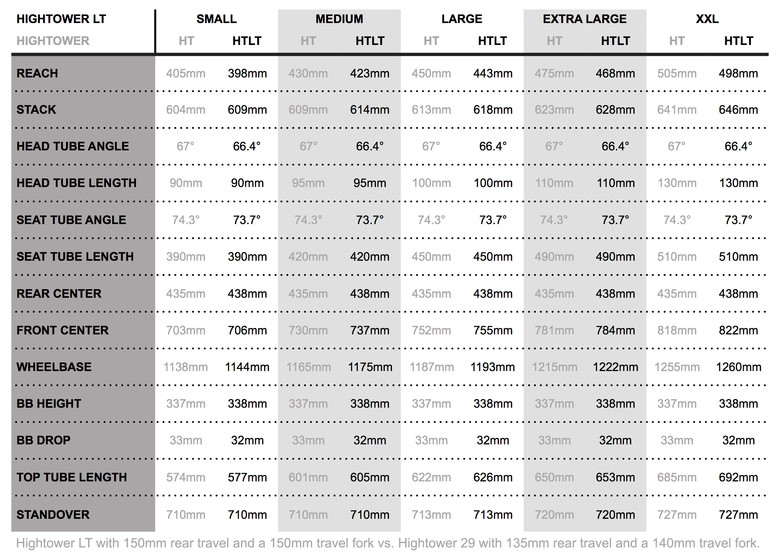
When compared to the Hightower (as shown in the above chart), the LT sees only minor adjustments to the bike's geometry. These include a 0.6-degree slacker headtube angle, 3mm longer chainstay, and a 7mm shorter reach. Bottom bracket height, seat tube length, and standover remain unchanged. Also, though not geometry specific, there is no longer 27.5+ tire compatibility with the LT, nor is there any form of "flip chip" geometry adjustment.
Recommended Sizing

We tested the new Hightower LT in a size XL which features a reach of 468mm (18.4-inches) – not exactly short, akin to some manufacturers Large (Trek or Transition, for instance). At 6'2" (1.88m) tall and a lover of long bikes, I wasn't exactly cramped but I certainly didn't go "Wow, this thing is long," especially when descending. Worth noting, Santa Cruz also offers this bike in size XXL featuring a reach even Reggie Miller can rejoice about.
Build Kits & Pricing
The LT is offered with more gravity-oriented parts than its shorter-travel brother. A stouter and longer travel fork, more adjustable piggyback shock, and slightly wider rims are the major differences.
Perhaps one of the biggest reasons to spring for the LT over the Hightower, on paper anyway, is the longer travel FOX 36 fork, more adjustable FOX DPX2 shock, and wider, more gravity-friendly 30mm rims.
Like other Santa Cruz models, the Hightower LT is available in both CC and C carbon layups and are priced from $3,949 to $9,299 USD. We were again lucky to test the top rung model complete with a SRAM Eagle XX1 drivetrain, top-shelf FOX dampers, and the new Santa Cruz Reserve carbon wheelset. Perhaps one of the biggest reasons to spring for the LT over the Hightower, on paper anyway, is the longer travel FOX 36 fork, more adjustable FOX DPX2 shock, and wider, more gravity-friendly 30mm rims.



View Hightower LT CC models | View Hightower LT C models
At $9,299 we expect a few readers will be turned off to this review. "OF COURSE it performed well, it had better at THAT price!" you might say. We hear you, however those with more realistic budgets would be pleased with the C S and C XE builds, priced at $4,899 and $5,699, respectively. Both bikes come with very capable suspension components, good tires, race-worthy drivetrains, and robust wear parts. Here at Vital we'd happily throw a leg over either and enter a race at any level with little reserve. Not to say the top end bike builds won't shave a second here or there, but the overall riding experience will be very similar between all but the most affordable build (which is still very trail worthy). Those looking to build up their own can purchase a frameset with a FOX Float DPX2 shock for $2,999.
Finally, when asked about coilover shock compatibility, Santa Cruz had the following to say:
"Coil shocks aren't as progressive as the air shocks the bike was designed around, but it could work for some people depending on terrain/riding style/preference. There will be decreased bottom-out resistance compared to an air shock, generally speaking. Of course you can keep increasing spring rate, but this will firm up the the whole stroke to get the bottom-out resistance that you're trying to achieve. This is where personal preference and riding style come into play. The great thing about air shocks is they can be fine tuned via air pressure and volume spacers to suit nearly any rider's preference."

On The Trail
Per the usual, let's get the boring part out of the way. After all, you gotta get up if you wanna get down…
Santa Cruz bills their Hightower as having "the versatility to deal with whatever appears on the horizon." It appears the LT follows in these footsteps, showing us it is an incredibly efficient and capable climber. The bike's rear suspension was quiet with no bobbing or undue shock movement despite a less-than-perfect pedal stroke. Even out-of-saddle efforts yielded little movement, so much so I often reached down to see if the shock was in one of its firmer compression modes (it wasn't). The overall feel of the rear suspension is very similar to that of the Hightower with the bump in travel going relatively unnoticed on most ascents.
The overall feel of the rear suspension is very similar to that of the Hightower with the bump in travel going relatively unnoticed on most ascents.

This bike was brought to fruition as a result of Santa Cruz's EWS team's demands, so it should be of little surprise the bike is a highly capable descender. Four main things stood out immediately when pointed downhill:
Superb Chassis Design and Carbon Layup - Santa Cruz is producing some of the most refined and well-tuned carbon fiber chassis on the planet. The frame is incredibly stiff without being harsh. The bike inspires confidence when pushed hard, staying precise, muting high-frequency trail vibration, and efficiently transferring trail forces to the damper. "Solid" would be an excellent adjective for the frame.
The bike inspires confidence when pushed hard, staying precise, muting high-frequency trail vibration, and efficiently transferring trail forces to the damper. "Solid" would be an excellent adjective for the frame.
Excellent Cornering - Balanced geometry, good frame design, wide tires, and wide rims all make for a package that will change direction with the best of them.
Muted Suspension Feel - The bike's rear end sometimes felt over-damped, giving the bike a quieter, more muted feel. Be it the suspension's kinematics or the damper tune, this was very noticeable the second you sit on the bike. On one hand this can make for an efficient ride. On the other hand it can feel a bit dead at times, transferring more trail force to the rider and sometimes bordering on harsh for a bike with 150mm of travel. We will be tuning the bike's rear end more over the coming months and update our findings in a longer-winded full test later this summer.
The bike's rear end sometimes felt over-damped, giving the bike a quieter, more muted feel.
Stay Centered - This bike encourages a rider who stays between the two wheels, letting the bike work without excessive input to the bike. Working the bike (pumping, doubling, etc) is still very possible, but when doing so we sometimes felt as though the bike used more travel than other similar frames at a given sag point. We found it best to "let the bike do the work."
Early Durability Concerns
Unfortunately, we did have a few durability woes with the FOX product spec'd. Hardly Santa Cruz's fault, and something FOX has responded to quickly, but all three warrant disclosure. With respect to the rear shock, our first DPX2 suffered intermittent air loss, sometimes losing as much as 30psi over the course of a ride. Our replacement DPX2 proved to hold air just fine but developed an audible "squeak" when temperatures rose during a long and punishing descent. To add, the shock has also developed a "clunk" the rider can feel when initiating the shock's travel.
The FOX 36 fork, on the other hand, has developed an audible "clang" on top out. The replacement fork has been impeccable, however, and may be one of the best 29-inch long-travel forks we've ever thrown a leg over.
Second, we have gotten the bike to creak a bit, but then again this particular Vital tester has gotten every single bike he's ever ridden to creak. It's not super bad and a quick clean/grease would likely fix the issue, but it's worth noting this early in the test.
Outside of that, ten days is hardly enough time to really comment on durability. We'll be updating this with our longer term look.


Compared To The Hightower
"I love my Hightower, should I upgrade?" We are anticipating this to be one of the biggest questions on a number of riders' minds. Though we need more time, our short answer is no. Putting a longer travel fork on the Hightower will yield a very similar feeling and riding bike to the LT. The new rig is a revision, not a revolutionarily new bike in the same way that the fourth generation Nomad is, for example.
Putting a longer travel fork on the Hightower will yield a very similar feeling and riding bike to the LT. The new rig is a revision, not a revolutionarily new bike...
On the other hand, if you are buying a new bike and don't care about plus-sized tires, we have a hard time finding any reason to not suggest the LT over the Hightower, especially considering how efficient both bikes are and our propensity toward more gravity-friendly builds. Again, we will update this in due time.

What's The Bottom Line?
Though not a radical departure from the original Hightower, the Hightower LT is a solid performing longer travel 29-inch bike. While you aren't going to confuse this bike for your downhill rig, it is one of the most versatile long travel 29-inch steeds one could throw a leg over. If Metric compatibility is no big thing and you dig the feel of Santa Cruz's VPP suspension, give this wagon wheeler a hard look. We'll be updating these findings with a longer term test in the coming months, so stay tuned.
In the meantime, visit www.santacruzbicycles.com for more details and to read the development story.
Vital MTB First Ride Rating
Climbing: 4.5 stars - Outstanding
Descending: 3.5 stars - Very Good
Fun Factor: 3.5 stars - Very Good
Value: 3 stars - Good
Overall Impression: 3.5 stars - Very Good
About The Reviewer
Jeff Brines - Age: 32 // Years Riding MTB: 18 // Height: 6'2" (1.88m) // Weight: 200-pounds (90.7kg)
Jeff didn't go on a real date until he was nearly 20 years old, largely as a result of his borderline unhealthy obsession with bicycles. Although his infatuation with two wheels may have lead to stuttering and sweatiness around the opposite sex, it did provide for an ideal environment to quickly progress through the ranks of both gravity and cross-country racing. These days, Jeff races enduro at the pro level, rides upward of 150 days a year while logging over 325k of human powered ascending/descending on his bike. Bred as a racer, Jeff is more likely to look for the fastest way through a section as opposed to the most playful. He lives in the shadow of the Tetons in Jackson, Wyoming.
Photos by Jeff Brines, Jay Goodrich, and Sven Martin
48 comments
Post a reply to: Super Size Me: The 2018 Santa Cruz Hightower LT
Specifications
1X drivetrain specific design
Price includes Santa Cruz’s Reserve carbon rim upgrade
| Where To Buy | |||
|---|---|---|---|
Free shipping on orders over $50 (continental U.S. only).
International shipping available. Some exclusions apply. |
|||
Free shipping on orders over $50 (continental U.S. only).
International shipping available. Some exclusions apply. |
|||
















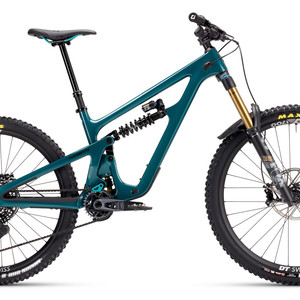
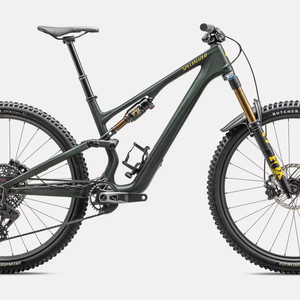


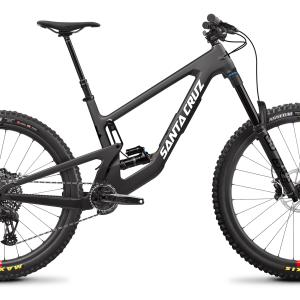
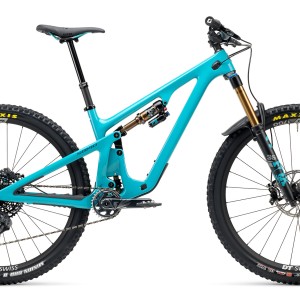
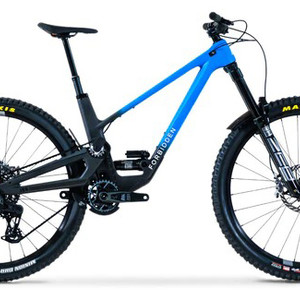
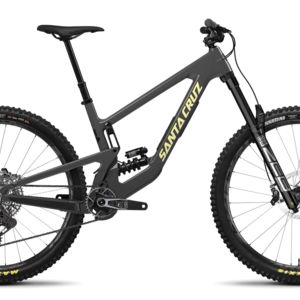







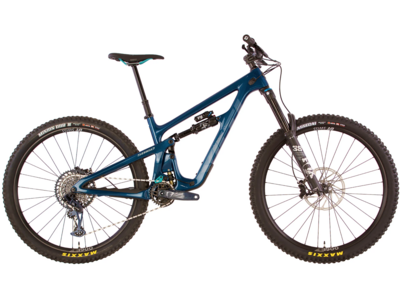
35 comments
Post a reply to: Long Term Tested: 2018 Santa Cruz Hightower LT